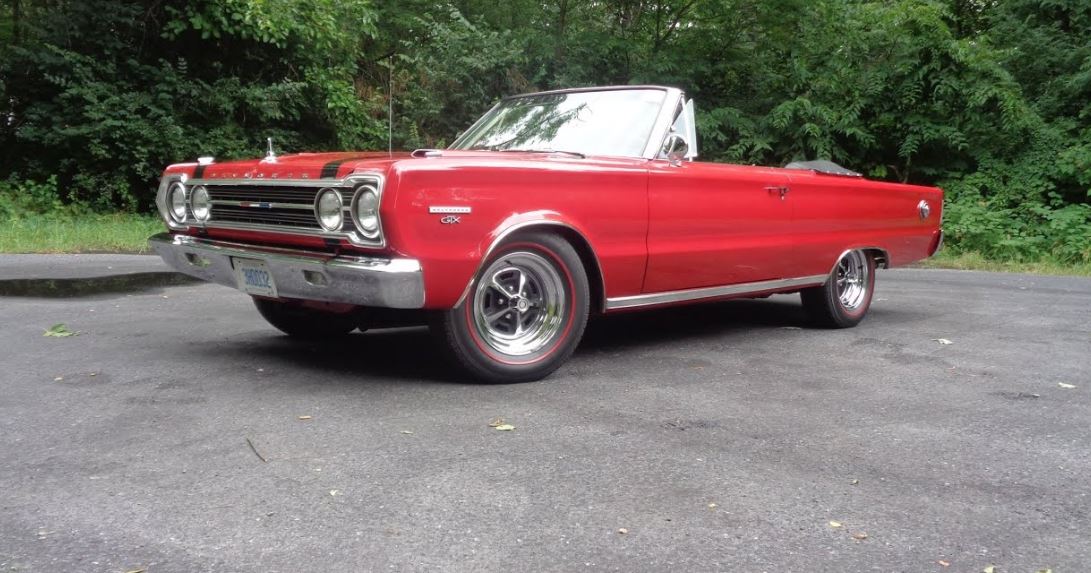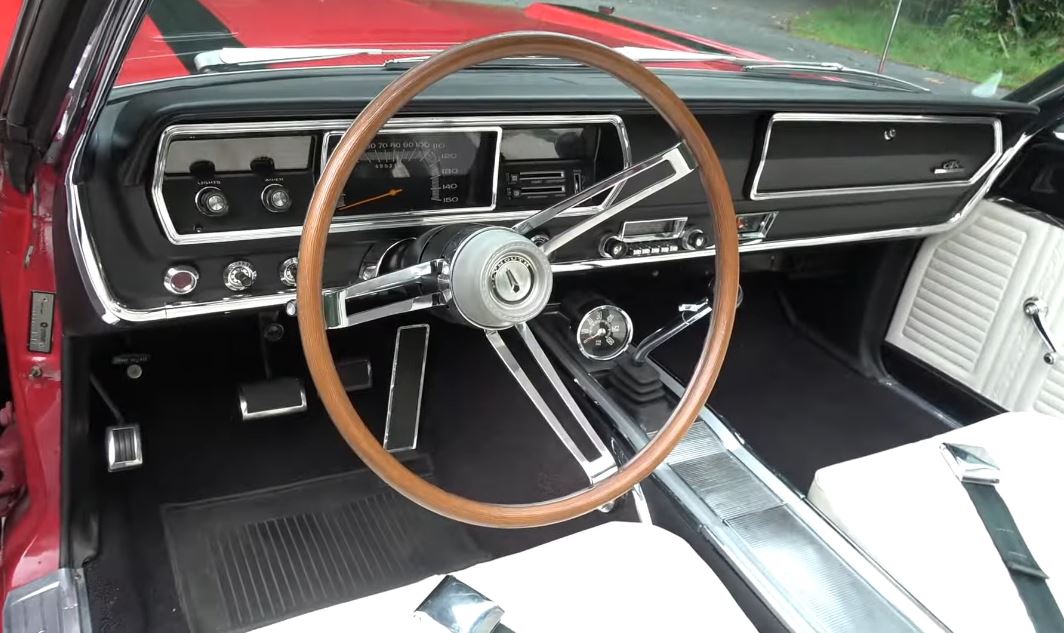In 1966, Chrysler Motor Corporation released a street version of its award-winning, competition-mauling engine, the 426 Hemi. The Plymouth division got the lion’s share, dividing it between the twin cousins Belvedere and its high-trim alter ego, the former. The following year, the latter received yet another medal of distinction in the form of the GTX, a superior variant of the same Belvedere. From 1968 onward, the GTX became a separate model but kept its ‘gentleman’s muscle car’ demeanor.
In 1967, 12,010 Belvedere automobiles were branded with a three-letter badge of merit – GTX – and Plymouth boasted about it being ‘the most exciting Supercar to come out of Detroit in years.’ It wasn’t just marketing gabble, as the new car didn’t care for less than eight cylinders, and even so, it was still fussy about the displacement.
Consequently, it was punished to bear the public shame of being an automobile that offered only two engine options. Curiously, the bigger one came standard – something the smart Alecs from Dodge also did with their Road/Track package. That ‘bigger one’ was, in fact, the biggest available in any Chrysler passenger car that year, a 440-cubic inch Super Commando with a four-barrel carburetor. The 7.2 liters of displacement were a good serving of Mopar horsepower and torque, but the GTX could do better.
In the Options segment of the order forms, under the Engine paragraph, there was one line that simply read, ‘426 CID Engine 2-4 bbl dual exhaust.’ On the right side, the price for said option read $564. For a $3,178 starting point, 20% over the base price is not exactly a coin-throwing choice. As such, only 737 were ordered with the monstrous 425-horsepower, 490-pound-feet motor (431 PS, 664 Nm).
The bulk of production fell on the shoulders of the other torque-slinging heavyweight, the Super Commando, which fired a broadside of 375 hp and 480 lb-ft (380 PS, 651Nm). 11,277 units left the assembly lines with the standard 440-4 RB block under the hood. Out of the total headcount of 12,020 GTXs, 680 had a retractable roof – quite a rarity among its peers.
Mopar fanatics know how much these are worth and do their best to preserve them for future generations of piston addicts. Ray Dupuis from Ontario, Canada, is one massive Mopar-blooded car nut who’s been in the car restoration business for over forty years, right after he gave up on his drag racing career. He owns a jaw-dropping collection of Chrysler classics (Hemis and other rarities), one of which is a red-and-black-over-white 1967 Plymouth Belvedere GTX convertible.
The car was pulled out of a junkyard and passed a four-year restoration with flying colors—play the video below and see (and hear) it. While otherwise an honest-to-piston Canadian motor loyalist, Ray indulged in one non-original (but otherwise correct) spoil on the GTX—the dashboard-mounted electric clock.
Everything else is just as Mother Mopar herself would have made it back in 1967 – right down to the chrome exhaust pipe tips sticking out from underneath the rear bumper. The car’s milometer reads 49,521 (79,696 kilometers), but the owner can’t swear on it. Being a salvage car, it’s probably rolled over (the staggered digits on the clock would support this theory).
The car is one of Ray’s pride and joys. Still, his partner Lisette gets all the compliments for it, as she drives the car regularly, including at car meets and other automobile shows. At one of these crankshaft gatherings, the vehicle was noticed, and a team from Johnny Lightning, the diecast model company, approached its owners. At the 2017 Muscle Car and Corvette Nationals, Lisette and Ray were sitting next to their displayed one-year-only Belvedere GTX convertible rarity (which, at the time, was in their possession for a decade).
Johnny Lightning likes the car so much that they made a toy replica after it. I’m not sure if the scale model (one of the 2,500 made) is so detailed as to show the 6,000 RPM dial on the console-installed tachometer right in front of the shift stick for the four-speed manual transmission. Still, the toy is as stunning as the real thing.


